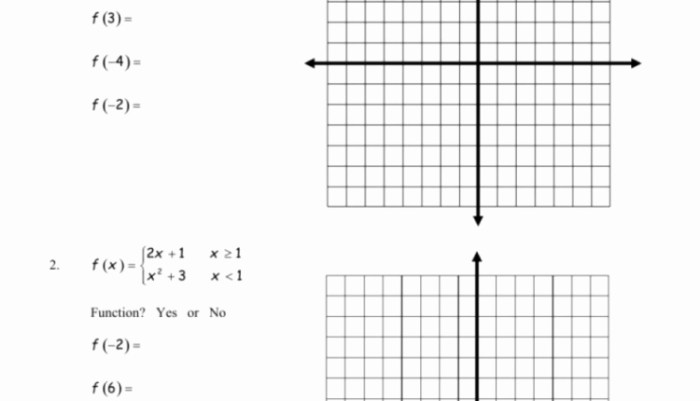Prepare to embark on an enlightening journey as we delve into the captivating realm of quiz 3 special angles and segments. This comprehensive guide will unravel the intricacies of these geometric concepts, offering a profound understanding that will illuminate your path through the world of mathematics.
As we explore the diverse types of special angles and segments, we will uncover their unique characteristics and relationships. The Pythagorean theorem and trigonometric ratios will become our guiding lights, shedding clarity on the enigmatic connections between these geometric elements.
Definition and Overview of Special Angles and Segments
Special angles and segments are fundamental concepts in geometry that help us describe and analyze shapes. Understanding these special features is essential for solving various geometry problems.
Special Angles
Special angles are angles that have specific measures and properties. They include:
-
-*Acute angle
An angle less than 90 degrees.
-*Right angle
An angle that measures exactly 90 degrees.
-*Obtuse angle
An angle greater than 90 degrees but less than 180 degrees.
-*Straight angle
An angle that measures exactly 180 degrees.
Special Segments
Special segments are line segments that have specific relationships with other segments or angles. They include:
-
-*Adjacent segments
Two segments that share a common endpoint.
-*Opposite segments
Two segments that are located on opposite sides of a line or angle.
-*Hypotenuse
The longest side of a right triangle, which is opposite the right angle.
Types of Special Angles and Segments
Special angles and segments are classified based on their specific measures. Here are some common types:
Types of Special Angles
Angles are classified based on their measure in degrees:
- Acute Angle:An angle less than 90 degrees.
- Right Angle:An angle measuring exactly 90 degrees.
- Obtuse Angle:An angle greater than 90 degrees but less than 180 degrees.
- Straight Angle:An angle measuring exactly 180 degrees.
- Reflex Angle:An angle greater than 180 degrees but less than 360 degrees.
- Full Angle:An angle measuring exactly 360 degrees.
Types of Special Segments
Segments are classified based on their length in relation to other segments:
- Congruent Segments:Segments with equal lengths.
- Parallel Segments:Segments that lie in the same plane and never intersect, no matter how far they are extended.
- Perpendicular Segments:Segments that intersect at a right angle.
- Bisector:A segment that divides an angle or segment into two equal parts.
- Median:A segment that connects the midpoint of a side to the opposite vertex of a triangle.
- Altitude:A segment that is perpendicular to a side of a triangle and passes through the opposite vertex.
Relationships between Special Angles and Segments: Quiz 3 Special Angles And Segments
Special angles and segments are interconnected through fundamental mathematical relationships.
Pythagorean Theorem and Special Segments
The Pythagorean theorem establishes a crucial relationship between the sides of a right triangle: a² + b² = c², where aand bare the lengths of the legs, and cis the length of the hypotenuse. This theorem has numerous applications in geometry, including calculating the lengths of special segments.For
instance, in a right triangle with a 30°-60°-90° angle measure, the ratio of the sides is:
Short leg
x
Long leg
x√3
Hypotenuse
2xUsing the Pythagorean theorem, we can determine the relationship between these segments:
- (x)² + (x√3)² = (2x)²
- x² + 3x² = 4x²
- x² = 0
- x = 0
This shows that the Pythagorean theorem can be used to find the lengths of special segments in right triangles with specific angle measures.
Trigonometric Ratios and Special Angles
Trigonometric ratios, such as sine, cosine, and tangent, relate the angles of a right triangle to the ratios of its sides.
- Sine (sin) = opposite side / hypotenuse
- Cosine (cos) = adjacent side / hypotenuse
- Tangent (tan) = opposite side / adjacent side
These ratios have fixed values for special angles, providing a convenient way to determine the lengths of special segments.For example, in a 30°-60°-90° triangle, the trigonometric ratios are:
- sin 30° = 1/2
- cos 30° = √3/2
- tan 30° = 1/√3
Using these ratios, we can find the lengths of the sides:
- Opposite side = hypotenuse
- sin 30° = 2x
- 1/2 = x
- Adjacent side = hypotenuse
- cos 30° = 2x
- √3/2 = x√3
Thus, trigonometric ratios allow us to determine the lengths of special segments in right triangles with specific angle measures.
Applications of Special Angles and Segments
Special angles and segments are fundamental concepts in geometry and trigonometry, finding applications in diverse fields such as architecture, engineering, and astronomy. They play a pivotal role in understanding and constructing geometric figures, calculating distances, and solving problems involving angles and segments.
Their relevance extends to real-world scenarios, where they aid in designing structures, navigating paths, and measuring objects. For instance, architects use special angles to determine the optimal orientation of buildings for sunlight and energy efficiency, while engineers employ them in designing bridges and other structures to ensure stability and load-bearing capacity.
In Architecture
Special angles and segments are indispensable in architecture, enabling architects to create aesthetically pleasing and structurally sound designs. By incorporating specific angles, such as 30-60-90 triangles or golden ratios, they can achieve visual harmony and balance in buildings.
- Golden Ratio:The golden ratio, approximately 1.618, is often used in architecture to create visually appealing proportions. It can be observed in the design of buildings like the Parthenon in Greece and the Guggenheim Museum in New York City.
- 30-60-90 Triangles:These triangles, with angles of 30°, 60°, and 90°, are commonly used in architectural designs to create equilateral shapes and ensure structural stability. They are frequently employed in the construction of roofs, arches, and staircases.
Advanced Concepts
Delving deeper into the realm of special angles and segments, we encounter advanced concepts that broaden our understanding and enhance our ability to solve complex mathematical problems.
One such concept is the use of radiansto measure angles. Radians are a unit of angular measure based on the circumference of a circle. A full circle measures 2π radians, where π is a mathematical constant approximately equal to 3.14.
Radians are particularly useful in calculus and trigonometry, where they simplify calculations involving circular functions and derivatives. For example, the sine function of an angle θ in radians is given by sin(θ) = y/r, where y is the vertical coordinate of a point on the unit circle corresponding to the angle θ and r is the radius of the circle.
Unit Circle, Quiz 3 special angles and segments
Another advanced concept related to special angles and segments is the unit circle. A unit circle is a circle with a radius of 1 unit. It is often used as a reference for defining and measuring angles in radians.
The unit circle has several important properties. For example, the coordinates of a point on the unit circle corresponding to an angle θ are (cos(θ), sin(θ)). This property allows us to use the unit circle to find the values of trigonometric functions for any angle.
Advanced concepts such as radians and the unit circle provide powerful tools for solving complex mathematical problems. They extend our understanding of special angles and segments and enable us to explore more advanced topics in mathematics.
Key Questions Answered
What are the different types of special angles?
Special angles include acute angles (less than 90 degrees), right angles (exactly 90 degrees), obtuse angles (greater than 90 degrees but less than 180 degrees), and straight angles (exactly 180 degrees).
What is the Pythagorean theorem?
The Pythagorean theorem states that in a right triangle, the square of the length of the hypotenuse (the side opposite the right angle) is equal to the sum of the squares of the lengths of the other two sides.
What are trigonometric ratios?
Trigonometric ratios (sine, cosine, and tangent) are ratios that relate the lengths of the sides of a right triangle to the angles opposite those sides.

